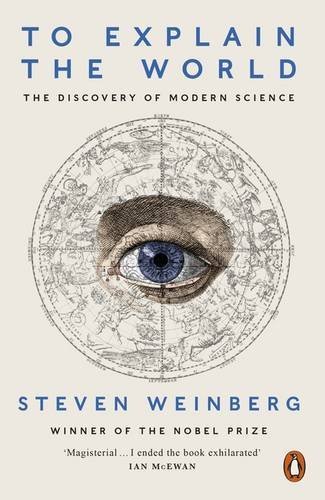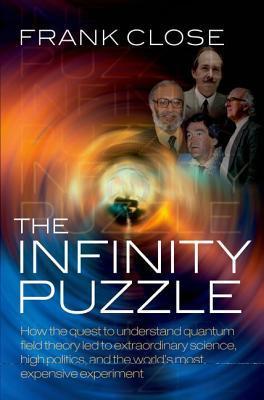
The Discovery of Subatomic Particles
Book Description
Amid the vast expanse of the universe lies a hidden world that challenges our very understanding of reality. In 'The Discovery of Subatomic Particles,' Steven Weinberg unravels the astonishing journey into the depths of the atom, where particles dance at the edge of existence and reshape our perception of the cosmos. With clarity and passion, he illuminates the revolutionary concepts and fierce debates that have given birth to modern physics, revealing how tiny particles wield immense power over everything we know. What secrets await in the microcosm, and how will they redefine our place in the universe?
Quick Book Summary
"The Discovery of Subatomic Particles" by Steven Weinberg offers an illuminating account of the scientific journey that unveiled the fundamental components of matter. Tracing the evolution of physics from the 19th-century conception of the atom to the modern understanding shaped by quantum mechanics and particle physics, Weinberg expertly weaves together experimental breakthroughs, theoretical insights, and the personalities behind the discoveries. He demystifies the processes that led to the identification of electrons, protons, neutrons, and an array of more exotic particles, showing how each new element of knowledge challenged established viewpoints. The book also delves into the nature of scientific revolution and highlights the ongoing quest for a unified theory of matter and forces. With a blend of narrative history and scientific explanation, Weinberg reveals the wonder and complexity of the subatomic domain, underlining its profound significance for our perception of the cosmos.
Summary of Key Ideas
Table of Contents
The Evolution from Atoms to Subatomic Particles
At the turn of the 20th century, the atom was widely regarded as the indivisible unit of matter, a concept inherited from ancient philosophers. However, as physicists pushed the limits of experimental technique, this model began to unravel. Weinberg recounts how investigations into electricity, radioactivity, and atomic spectra led to the groundbreaking realization that atoms themselves are composed of smaller constituents. The discoveries of the electron by J.J. Thomson, the atomic nucleus by Ernest Rutherford, and later the neutron by James Chadwick were pivotal moments that reframed the atomic landscape and forced the scientific community to rethink the fundamental structure of matter.
Revolutionary Experiments and Key Discoveries
Experiments, ranging from cathode ray tubes to Rutherford’s gold foil experiment, played an instrumental role in unraveling subatomic mysteries. Each new discovery not only brought the microcosmic world into sharper focus but also spurred intense debate and theoretical innovation. Quantum theory emerged as a response to the paradoxes exposed by these findings, providing a framework that could explain atomic stability and the behavior of subatomic particles. The quantum revolution didn’t merely clarify prior knowledge; it introduced entirely new concepts such as wave-particle duality and uncertainty, irrevocably changing the trajectory of physics.
The Development and Challenges of Quantum Theory
Central to the narrative are the personalities and rivalries that shaped the direction of discovery. Weinberg explores the diverse motivations, intellectual passions, and sometimes contentious collaborations among physicists such as Niels Bohr, Werner Heisenberg, and Paul Dirac. Their willingness to challenge convention and their creative leaps of logic demonstrate the deeply human dimension of scientific progress. The process was neither smooth nor linear: it was marked by heated debates, hesitant acceptance of novel ideas, and moments of brilliant insight that redefined scientific consensus.
The Human Element: Scientists and Their Debates
As the field matured, the proliferation of ever-more exotic particles prompted the quest for deeper unification. The mid-20th century ushered in the era of accelerators and particle detectors, leading scientists to discover a ‘zoo’ of particles and fueling attempts to find underlying patterns and symmetries. This drive underpinned the development of the Standard Model, which classified particles and interactions with extraordinary precision. Yet, Weinberg underscores, the search for the ultimate unity—potentially through theories such as grand unification or string theory—remains a central, ongoing challenge in physics. The deeper we probe, the more fundamental questions arise about matter, energy, and the universe itself.
The Search for Unity in Particle Physics
Weinberg concludes by reflecting on the philosophical and practical significance of subatomic discoveries. The exploration of the atom’s depths has not only transformed technology and daily life but also shaped our entire worldview. From nuclear power to medical applications, the ripples of these insights extend far beyond the laboratory. Above all, the story of subatomic particles reveals both the extraordinary power of human curiosity and the continuing mysteries that lie hidden in the fabric of nature.
Download This Summary
Get a free PDF of this summary instantly — no email required.





